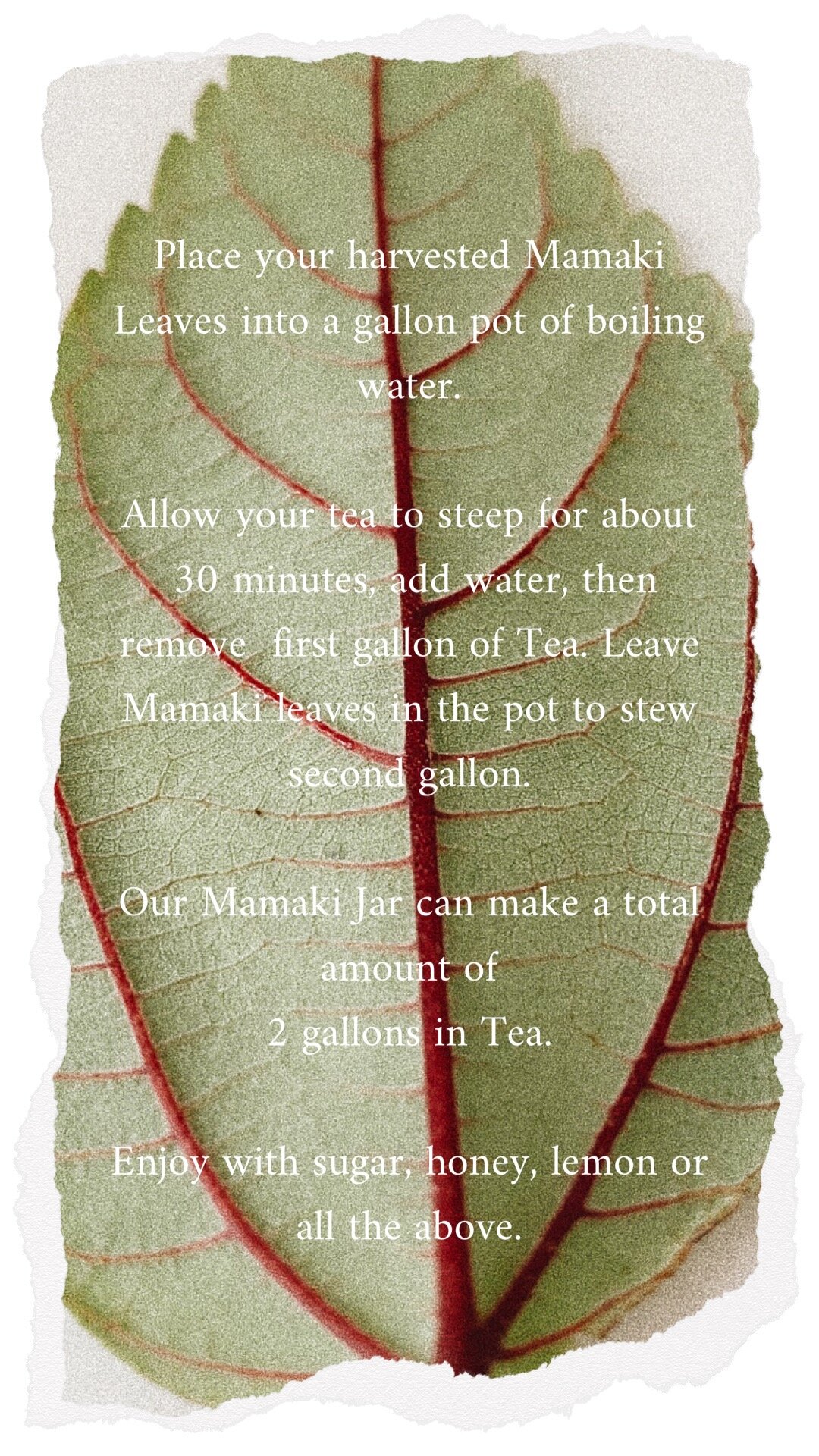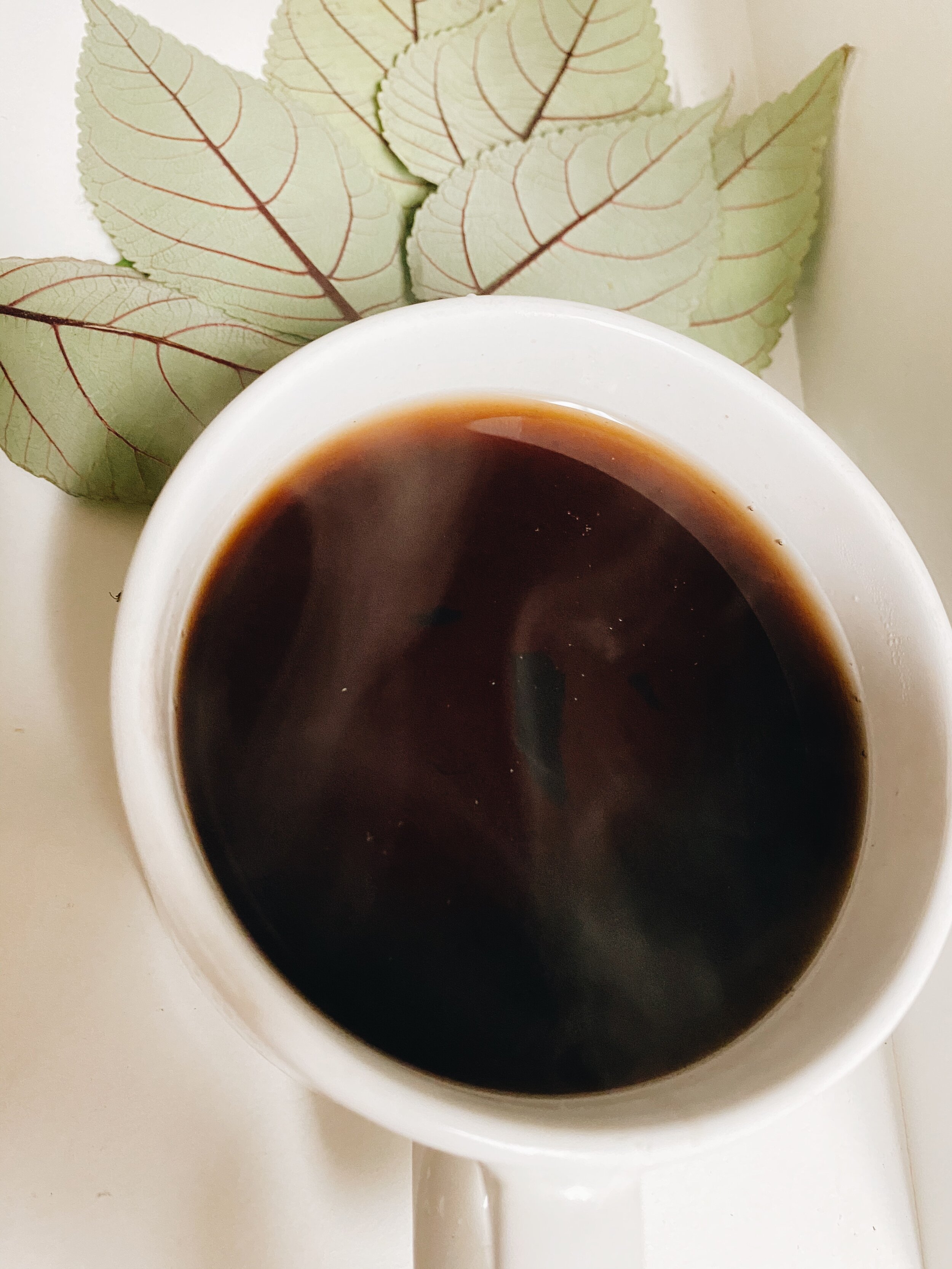 Image 1 of 6
Image 1 of 6

 Image 2 of 6
Image 2 of 6

 Image 3 of 6
Image 3 of 6

 Image 4 of 6
Image 4 of 6

 Image 5 of 6
Image 5 of 6

 Image 6 of 6
Image 6 of 6







Māmakī Tea
Māmaki; Edemic Hawaiian medicial Plant.
Pipturus albidus & Pipturus forbesii
found Wild throughout Hawaiʻi in wetland crown lands like Hanawī & Waikamoi, Maui, Hawaiʻi.
Māmaki leaves are made into Tea as a “cleaning agent”.
The inner bark fibers were used in making kapa. The long strong fibers of māmaki were used for rope & cordage.
When made into Tea, Māmaki works to promote healthy cardiovascular functions, lowers stress levels while balancing energy.
Māmaki is commonly used to reduce allergy symptoms, works as natural antioxidants, while also promoting liver Health.
Benefits:
Anti-oxidant
Mild Natural Laxative
Cardiovascular Health
Decrease Stress levels
Reduce Allergy Symptoms
Promote Liver Health
Helps with Asthma
Our mo'olelo flows along a course inspired by our ' akua and informed by our kupuna. A reflection on the role of the land in the health of Kanaka Maoli must begin with the origins of Hawaiians from the life forces of the land, as traced through mo'oku'auhau or family genealogies.
***Mamaki leaves are a favorite food of the Kamehameha butterfly’s larvae (Vanessa tameamea). Refrain from killing the larvae of this native insect if you see worms eating your leaves. Normally, they will eat some of the plant and leave some for you.
Māmaki; Edemic Hawaiian medicial Plant.
Pipturus albidus & Pipturus forbesii
found Wild throughout Hawaiʻi in wetland crown lands like Hanawī & Waikamoi, Maui, Hawaiʻi.
Māmaki leaves are made into Tea as a “cleaning agent”.
The inner bark fibers were used in making kapa. The long strong fibers of māmaki were used for rope & cordage.
When made into Tea, Māmaki works to promote healthy cardiovascular functions, lowers stress levels while balancing energy.
Māmaki is commonly used to reduce allergy symptoms, works as natural antioxidants, while also promoting liver Health.
Benefits:
Anti-oxidant
Mild Natural Laxative
Cardiovascular Health
Decrease Stress levels
Reduce Allergy Symptoms
Promote Liver Health
Helps with Asthma
Our mo'olelo flows along a course inspired by our ' akua and informed by our kupuna. A reflection on the role of the land in the health of Kanaka Maoli must begin with the origins of Hawaiians from the life forces of the land, as traced through mo'oku'auhau or family genealogies.
***Mamaki leaves are a favorite food of the Kamehameha butterfly’s larvae (Vanessa tameamea). Refrain from killing the larvae of this native insect if you see worms eating your leaves. Normally, they will eat some of the plant and leave some for you.
